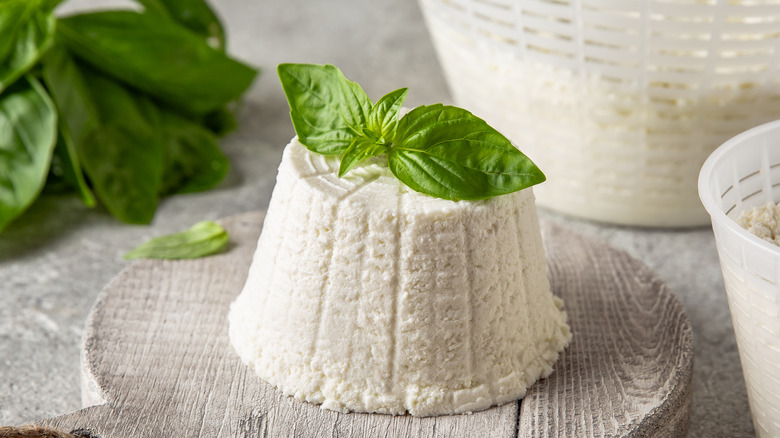The Outright Best Cheese For Earthy Vegetable Pizzas
The wonderful thing about pizza is that the dough, sauce, and toppings are always up for customization. However, with so many potential combinations, pairing flavors can seem like a tall order, especially when more peculiar-tasting ingredients are involved. Although mozzarella might be the default cheese for pizzas of all sorts, when it comes to pies laden with earthy vegetables, there's actually a better option.
All produce has a slight earthiness, but those with an especially soil-kissed quality include root vegetables, leafy greens, and mushrooms. Given their intense flavor profiles, these ingredients can impart a world of flavor when added to a pizza, which is why they should be paired with a more neutral cheese as opposed to a bold one. A soft and mild cheese will achieve an equilibrium of taste, but rather than opt for a mozzarella or fior di latte, earthy produce is better served with fresh ricotta.
Delicately milky and mild, fresh ricotta — steer clear of smoked or aged versions! — allows earthy and woodsy ingredients to shine, all the while offering a hint of sweetness to help tame their pungent flavors without concealing them. Yet, since ricotta doesn't melt, adding it to pizza can prove challenging without the proper know-how.
Making the ultimate ricotta and vegetable pizza
Crafting a tasty pizza starts with quality ingredients and ends with the right techniques. After selecting a whole milk ricotta from your local cheesemonger (and straining it with a cheesecloth, should it be too wet), think about which earthy veggies should grace your pie. Anything from marinated artichokes to roasted beets, charred ramps to carrot ribbons, leafy chard to sautéd zucchini or even oyster mushroom confit can impart a mineral and grassy funk, making your pizza pop. Just remember that partially or fully cooked vegetables are best in order to avoid a soggy 'za.
With all the ingredients ready, the next thing to consider is assembly. Essentially, there are two different ways to go about adding ricotta to pizza. Despite its reasonable amount of fat and moisture, ricotta tends to become creamy when heated, rather than stringy and stretchy like mozzarella, which is exactly what makes it a great base in place of tomato sauce. Either leave it as is, or mix it with other melty cheeses like mozzarella or Gruyère for more depth. Alternatively, ricotta can also be added after pizza is cooked in order to maintain its freshness and texture. You can even whip the cheese for an airier consistency before dolloping it onto your finished pie.
Once your ricotta and vegetable pizza is ready to enjoy, all that's left to ponder is how you can avoid having to share the delicious masterpiece!

